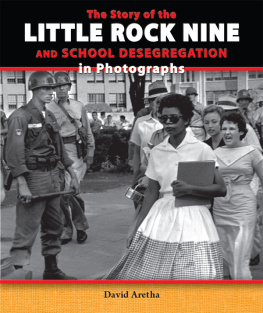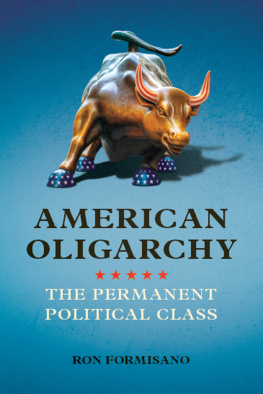1991 The University of North Carolina Press
Epilogue 2004 The University of North Carolina Press
All rights reserved
The Library of Congress has catalogued the original edition as follows:
Formisano, Ronald P.
Boston against busing : race, class, and ethnicity in the 1960s and 1970s / by Ronald P. Formisano.
p. cm.
Includes bibliographical references (p. ) and index.
1. Busing for school integrationMassachusetts
BostonHistory. 2. School integration
MassachusettsBostonHistory. 3. Social classes
MassachusettsBostonHistory. 4. Boston (Mass.)
Race relations. 5. Boston (Mass.)Ethnic relations.
I. Title.
LC214.523.B67F67 1991
370.19342-dc20 90-12587
CIP
ISBN 0-8078-5526-X (pbk.: alk. paper)
The paper in this book meets the guidelines for permanence and durability of the Committee on Production Guidelines for Book Longevity of the Council on Library Resources.
Manufactured in the United States of America
08 07 06 05 04 5 4 3 2 1
Illustrations
Clashing Symbols, September 1974: South Boston antibusing protester wears long hair and peace symbol while holding a racist effigy of a black,
Message for Guard: Massachusetts National Guardsmen receive antibusing message in South Boston, September 1975,
Mounted Patrol Moves In: Police push back crowd outside South Boston High School following the stabbing of a white student by a black student inside the school,
Street Sitters: Antibusing demonstrators outside Charlestown High School blocking buses, September 1976,
South Boston High School, December 11, 1974: Police Superintendent Joe Jordan stands by overturned police car,
Flowers and police at South Boston High School, December 12, 1975,
We Are Not Racists: Suburban support for Bostons antibusers, December 1974,
Tables
3.1 Racial Imbalance in the Boston Public Schools, 1965-1973
8.1 Boston Presidential Voting, 1960-1984
8.2 Ward Six, South Boston Presidential Voting, 1960-1984
8.3 Ward Seven, South Boston Presidential Voting, 1960-1984
8.4 Ward Twenty, West Roxbury Presidential Voting, 1960-1984
A.1 Percentage Approving of Boycotts by Neighborhood
A.2 Neighborhood Desire for Continued Protest
A.3 Neighborhood Acceptance of Busings Inevitability
Map
Bostons Neighborhoods, about 1970
Preface
I just want to let you know how opposed I am to your forced bussing order, but opposed though we are, my husband and I are trying so hard to be law abiding and set a good example for our 6 children, 3 of whom attend the South Boston-Roxbury District. We have silently protested and aloud to each other, but never marched or felt violent or even angry about your decision, so on Sept. 12 my children all went to school even though they were frightened, and among the very few in South Boston who did so.
[But] I havent sent my 3 older children since that first day, whybecause Im terrified 24 hrs a day. Living if thats what you can call it in a nightmare, helicopters over head, police everywhere (for which Im thankful), but which are constant reminders, people so full of hate, I never dreamed possible. I guess Im quite a fool, I never thought a lot of people I see in church so often were so unchristian like, it truly hurts, and makes the job of being a parent so much harder. South Boston mother to Judge W. A. Garrity, Sept. 23, 1974
In September 1974 I was living in Cambridge, Massachusetts, and commuting to work at Clark University in Worcester. From the comfortable remove of Harvard Square I watched with dismay the violence that erupted as Boston began to desegregate its public schools under court order. Unlike many throughout the country who associated Boston with an abolitionist past and a liberal present, as a historian I was better prepared to understand the conflict. I knew that there had been several Bostons whose diverse cultures had often generated religious bigotry, nativism, and ethnic and racial conflict. I knew that discord between Irish Catholics and African-Americans extended back to before the Civil War, and that pluralist tolerance had its limits in the case of the black minority. The events of 1974-75 nevertheless astounded me.
Like many others of my generation, I was powerfully affected by the Southern civil rights movement in the early 1960s. The rights of black Americans to full citizenship had been deferred too long, and I cheered their efforts to tear down the caste system of the South, rejoiced at the embracing of their cause by Presidents Kennedy and Johnson, and applauded Congresss passing of the 1964 Civil Rights Act and 1965 Voting Rights Act.
But even while celebrating these changes, on reflection it was clear that in the early 1960s the South was once again playing its role as the nations villain, once again attracting northern moral passion to right wrongsand the southern caste system was evil and did need to be dismantledand becoming the focus of a national morality play. What, I wondered, about racial prejudice and discrimination in the North? What about class lines in the North and the virtual caste lines that excluded blacks almost completely from white suburbs? It was especially troubling that desegregation schemes usually began and ended by mixing poor blacks and working- or middle-class whites, while the lives of upper-middle-class and rich whites remained untouched.
In 1974 my response to the Boston desegregation troubles was to offer a course on the topic in the spring semester. My students and I began the semester as liberals committed to the goal of an integrated society, and probably with some disdain for those opposing school desegregation in Bostons neighborhoods. We ended the semester desiring integration no less and feverently wishing for peaceful desegregation, but having lost an elitist bias against working-class or local people with values different from ours.
Our initial assumptions reflected the ease with which affluent and liberal whites, including scholars, assume that the Archie Bunkers are the only racists in our society. Most whites benefit from the institutional arrangements that keep a huge proportion of the black population in a subordinate position. From this perspective, those expressing intolerant attitudes are not the only racists and their racism is not abnormal....racism is quite characteristically American and... it can be found in different forms throughout the class structure.
Considering the central role of slavery and racism throughout American history, the nation has from one perspective come a long way in overcoming racism since World War II. The Second Reconstruction of the 1960s removed Jim Crow public segregation from the South and gave Southern blacks political leverage that they have used to good advantage. Job programs and affirmative action helped to create a new black middle class, and white Americans have increased social interactions with educated, better-off blacks considerably during the last two decades.
But the American Dilemma, as Gunnar Myrdal termed it in 1944, persists in a new form: the incongruity between the promise of American democracy and the grim reality of ghetto poverty for those whom Harold Cruse recently described as the magnified black millions of the Eighties existing below the poverty linethe black unemployed, the fatherless families, the high school dropouts, the petty criminals, the urban homeless, the unskilled, the welfare survivors whom the nation and its uplift forces and agencies cannot rescue.






